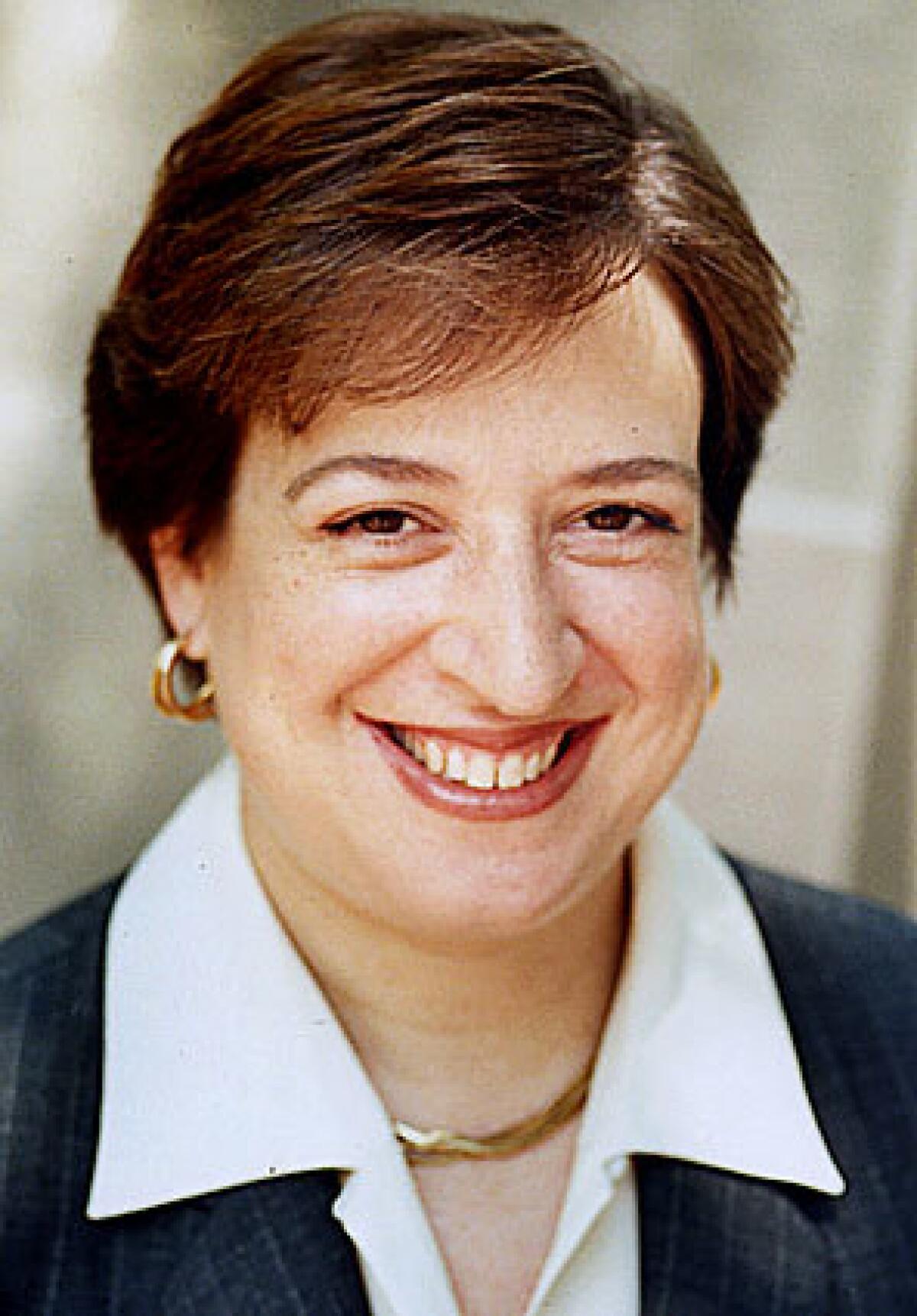The Supreme Court may poke another hole in the ‘wall of separation’ between church and state

- Share via
The Supreme Court may be poised to require states to subsidize religious schools if they provide financial support for other private schools, poking another hole in the “wall of separation between church and state” described by Thomas Jefferson as central to the 1st Amendment.
On Wednesday, the court heard arguments in a case brought by a group of parents of children who attend religious schools in Montana. The parents had challenged a Montana Supreme Court decision that ended a program under which taxpayers could receive a tax credit of up to $150 for donations to provide scholarships for children to attend private schools, including religious schools.
The Montana court held that the inclusion of religious schools in the program violated a provision in the Montana Constitution — similar to language in many other state constitutions — prohibiting “any direct or indirect appropriation or payment from any public fund or monies” to any school that is “controlled in whole or in part by any church, sect, or denomination.” The court then invalidated the entire program.
Questions by conservative Supreme Court justices on Wednesday suggested that they disagreed with the Montana court and thought that its ruling violated the free exercise of religion guaranteed by the 1st Amendment. That seemed to herald a ruling that if a state decides to provide subsidies or tax breaks that benefit students in private schools, it must include religious schools.
We hope the court will not rule that way. Such a decision would go well beyond a 2017 ruling in which the justices held 7-2 that the state of Missouri couldn’t exclude a Lutheran school from a state grant program that paid for the resurfacing of playgrounds. But in the lead opinion in that case, Chief Justice John G. Roberts Jr. made it clear that the ruling applied only to playground resurfacing, not other examples of religious use of state funding.
On Wednesday, Justice Elena Kagan, who was in the majority in that earlier decision, emphasized that the previous ruling involved a “completely secular public benefit.” By contrast, the Montana law as written would have allowed for state support of religious education much more broadly. While they are accredited and teach secular subjects, many Catholic and other religious schools insist that their religious faith pervades the education that they offer.
So long as they treat all religious schools the same, a state ought to be able to decide that it won’t subsidize the propagation of religion. That’s essentially what the court said in a 2004 case in which it upheld a decision by the state of Washington to exclude students studying for the ministry from a state scholarship program.
Admittedly, a tax credit that supports students who study both religious and secular subjects at, say, a Lutheran school is less of a subsidy for purely religious activities than a scholarship for a future minister. And it’s true that Jefferson’s “wall of separation” has long been a porous one. As early as 1947, the court upheld the constitutionality of a New Jersey law that authorized school districts to reimburse parents for the cost of transporting their children to parochial schools. In 2002, the court upheld the constitutionality of a program that provided parents in Cleveland with vouchers they could use at religious schools. College students can use federal grants to study at religious colleges as well as secular ones.
Still, a ruling in favor of the plaintiffs in this case would further undermine the principle that states need not subsidize religious education.
Justice Brett Kavanaugh referred to the fact that many state bans on aid to religious schools trace back to 19th century anti-Catholicism. But Kagan pointed out that such prohibitions need not be rooted in bigotry. “You might think that taxpayers have conscientious objections to funding religion,” she said. “You might think that funding religion creates divisiveness and conflict within a society, and that for all those reasons, funding religious activity is not a good idea.”
A victory for the plaintiffs in the Montana case would not require that states subsidize religious schools. A state would be free not to provide subsidies or tax credits for religious schools so long as it didn’t subsidize secular private schools.
Still, a decision in favor of the plaintiffs probably would embolden advocates for more generous taxpayer support for religious and nonreligious private schools in states where such aid is legally questionable. At a time when many public schools are woefully underfunded, that strikes us as bad public policy. Just because the Supreme Court says that such proposals are constitutional doesn’t make them wise.
More to Read
A cure for the common opinion
Get thought-provoking perspectives with our weekly newsletter.
You may occasionally receive promotional content from the Los Angeles Times.






